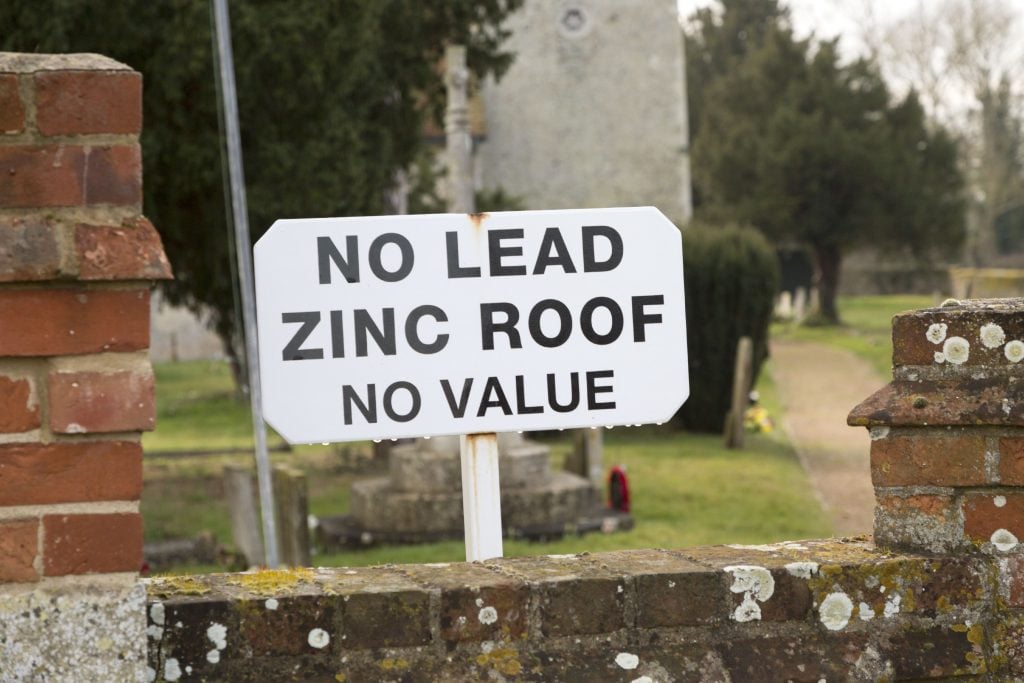Law & Politics
Thefts From Heritage Sites in the U.K. Are Rising, a New Report Finds
The report by Historic England shows the scale of heritage and cultural property crime.

The report by Historic England shows the scale of heritage and cultural property crime.

Verity Babbs

Historic England and National Police Chiefs’ Council (NPCC) have released their findings on the extent of damage done to historic properties in England via crime and vandalism. The new report comes at the end of a period of research undertaken by crime analysts at the National Crime Intelligence Unit for Serious Organised Acquisitive Crime, which began in February 2020.
The report identifies key types of criminal threats to historic and cultural properties: the theft of lead and stone from roofs, nighthawking (the practice of unlawful medal detecting), high-value burglaries, and the removal of artifacts from protected wreck sites. Other causes of damage include arson and graffiti.
The theft of historic stone is reported to have risen by nine percent in 2022. York stone—a popular material for construction because of its durability and variety of color—was found to be a particular target for thefts. The new report states that replacing stolen York stone slabs from historic properties can cost up to £400 ($510) per square meter to replace.
“When metal, stone, or other items are stolen from our historic buildings and cultural sites, it impacts the communities who enjoy those spaces,” said assistant chief constable Rachel Nolan, the NPCC lead for Heritage Crime. “We welcome any research into this area of criminality, which helps us to better understand the issue and, therefore, tailor our response to pursue offenders and deter any future opportunists.”
Theft of metal roofing (mostly lead) also increased by 41 percent during the pandemic lockdowns, but this figure is now falling. This decrease may be due to the reduced price that lead is fetching at market in comparison to previous years, and the fact that many historic churches are replacing their lead roofs with stainless steel.
Listed reasons for the increases in crime and damage included the lockdown periods, during which metal theft from historic places of worship was at an all-time high; the cost of living crisis which is expected to increase the rate of thefts by “opportunist offenders and organized crime groups”; and general anti-social behavior. “Cyber-enabled crime” was also mentioned as something due to impact crime rates, with the report explaining that “it is likely that stolen items will continue to be sold online where offenders can (often anonymously) make a profit.” The use of the internet to sell stolen historical goods also increases the likeliness of fakes entering the market.
The study found that while nighthawking practices have been reduced thanks to the support of landowners and the metal-detecting community, the theft of cultural objects from galleries, museums, and stately homes is on the rise. The research estimated that over £3.2 million ($4 million) worth of cultural property was stolen during 2021 and 2022. The Alliance to Reduce Crime Against Heritage are calling for a more accurate police recording process to effectively report incidents of loss and damage in heritage and cultural properties, which will lead to a more accurate understanding of the scale of these crimes.
Last year, following high-profile thefts from the British Museum, other British institutions joined in a conversation about the frequency of museum thefts. The chief executive of Historic England Duncan Wilson has noted that “heritage and cultural property crime robs us of our collective history,” and that “this research marks the next stage in our commitment to tackle such crime.”